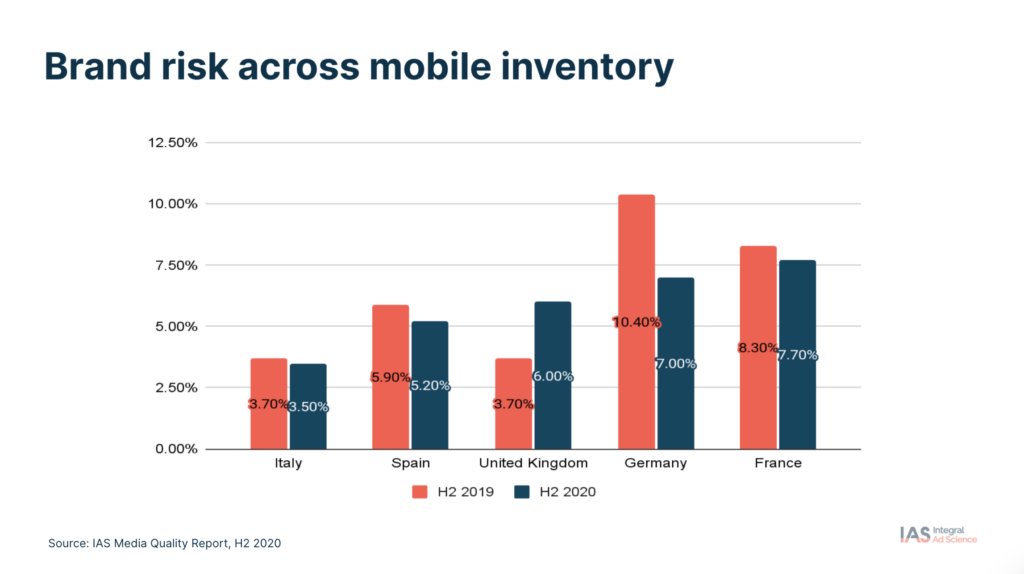It’s been a transformative year in digital advertising. The pandemic and global lockdown orders have increased digital content consumption at its fastest rate. At the same time, 2020 witnessed a rise in hate speech, misinformation and social movements. This has all impacted digital advertising and media quality – the content alongside which ads appear.
Issues such as brand safety are top of mind for every marketer – and for good reason. There are constant reports of brands running ads alongside questionable content. So, how much do these risks impact marketers in Europe and what does the state of media quality look like in the region?
IAS analysed over trillions of data events in its latest Media Quality Report H2 2020 and crunched the numbers to determine the state of media quality in the UK, Germany, France, Italy and Spain.
Brand risk impacted during a turbulent year
As content creation accelerated at an unprecedented rate, coupled with a rise in hate speech and misinformation, advertisers prioritised brand reputation and risk mitigation – ensuring that their advertising does not inadvertently appear next to hateful content or fund misinformation. However, over the past year, the brand risk landscape has shifted.
Due to the heightened sensitivity of global events in 2020, the IAS Media Quality Report highlights how brand risk levels for desktop display in Italy and the UK increased in the second half of 2020. Data shows that the increase of impressions flagged as posing a risk to brands was mainly driven by a rise in adult, hate speech, and violent content.
Meanwhile, Spain, France and Germany witnessed improvements in desktop display brand risk driven by an improvement in programmatic buys.

Brand risk on desktop video increased at lower rates than desktop display across all countries. Italy and the UK trended below the worldwide average with lower risk while Spain, France and Germany were above. IAS scores risk based on Medium, High and Very High risk levels, and noticed that the primary driver in desktop video risk was associated with Medium risk levels.

Brand risk for mobile web display witnessed a slight increase as well – an average of 5.8% of total ads worldwide were found to appear next to risky content in H2 2020, up from 5.7% in H1 2020. The upward trend was caused mainly by the violence content category, and offensive language and controversial content.
Mobile web display flagged the lowest percentage of brand risk content when compared to all other formats. All regions minus the UK – Italy, Spain, Germany and France – saw a decrease in brand risk across mobile web display.

When considering all formats across Europe, Italy had the lowest level of brand risk, while Spain witnessed significant improvements. On the other hand, after years of improvement, UK brand risk increased across all media environments in H2 2020 amid turbulent times.
Making Media Quality Count
The quality of content alongside which an ad appears matters to consumers and has a significant impact on their fondness of a brand. In fact, 68% of British consumers hold brands accountable for poor placements and this figure only increases across Europe: reaching 72% in France and 65% in Germany. Marketers need to make an effort in ensuring ads run in high-quality environments, to not only reach consumers, but make better connections with them as well.
Brands looking to navigate the ever-evolving digital environment should take a more effective brand safety and brand suitability approach and consider the context and sentiment of the content alongside which their ads appear.
Advertisers that have used sophisticated contextual technologies, including those offered by IAS, can deliver campaigns in line with their brand values and target consumers in high-quality and contextually suitable environments.
Download the full H2 2020 Media Quality Report and learn how you can optimise your next campaign.
 Share on LinkedIn
Share on LinkedIn Share on X
Share on X


